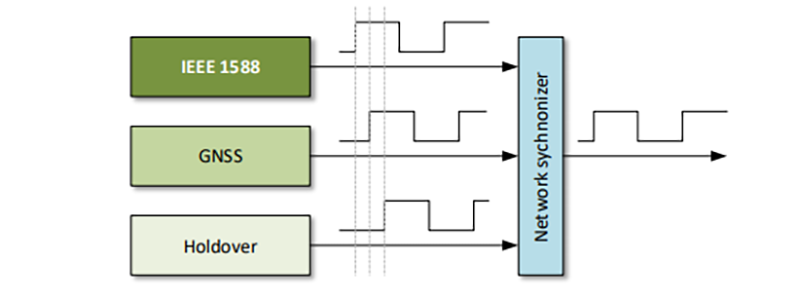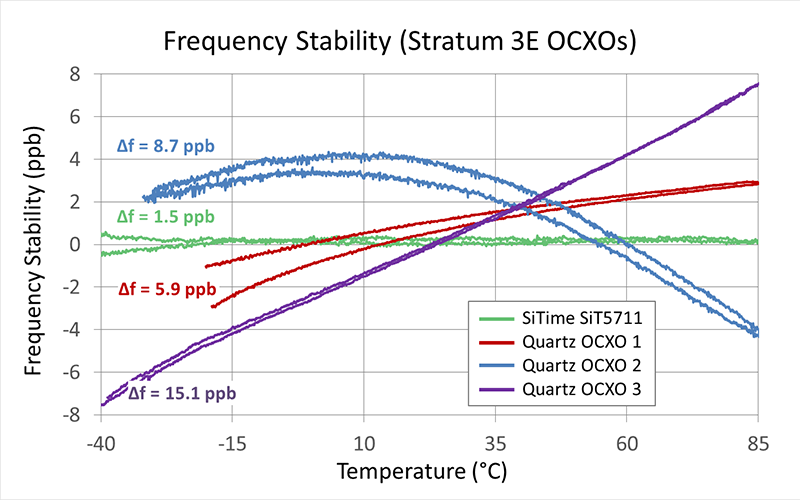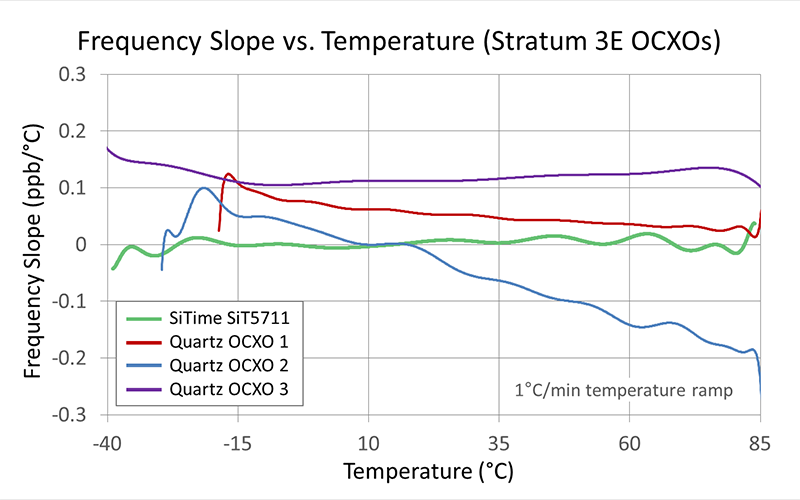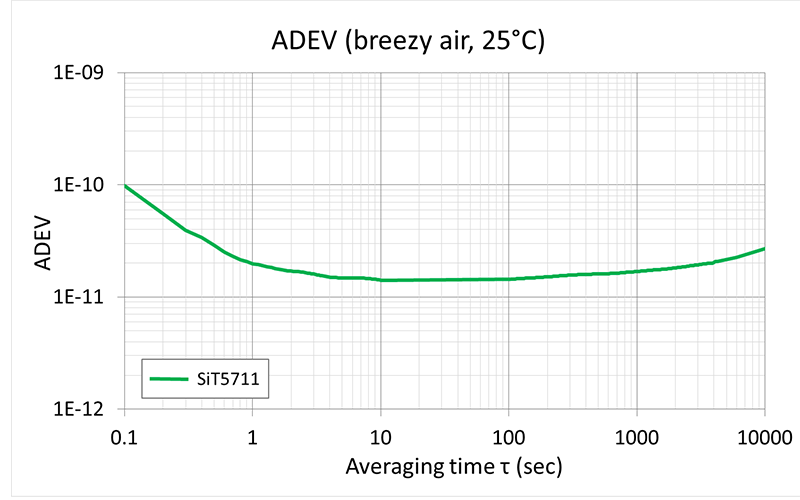Redefining best practices for implementing 5G timing solutions
Among the technological hurdles the industry faces while preparing for 5G, one of the most challenging is providing a network timing source that is accurate, stable and reliable enough to do more work, faster, over tighter channels than was possible with prior 4G networks that already had tight timing requirements.
By Markus Lutz, CTO and Founder, SiTime Corporation
With ten to 20 times more radios than 4G, the coming generation of 5G networks will have a much smaller latency budget between radios. Plus, the higher timing precision of 5G networks must be achieved even as this much larger number of radios, in less expensive housings and with less thermal and mechanical protection, must be pushed to locations with significantly lower environmental controls, including telephone poles and lampposts beside busy highways where they will be subjected to heat, vibration and rapid temperature shifts.
These and other 5G deployment challenges are being solved with the latest MEMS timing architectures that provide an alternative to earlier quartz crystal-based oven-controlled oscillator (OCXO) technology that had previously been used to deliver an accurate timing source. MEMS OCXOs overcome the limitations of quartz OCXOs while delivering new capabilities that will help usher in a new set of best practises for deploying 5G infrastructure in the harsh environments where this radio technology must operate.
Tighter timing in harsher environments
As mobile operators move into 5G and edge computing, they require much tighter time synchronisation in the radio equipment, which has necessitated the use of OCXOs. Prior to 5G, OCXOs were deployed in a well-controlled environment.
Now, the computing, core network, and radio will be collapsed into a 5G system that may be deployed in an uncontrolled environment such as a tower, rooftop, and lamppost. The OCXOs will be exposed to vibration and temperature extremes in this environment, without the benefit of the thermal and mechanical protection that was provided with earlier 4G radio housings.
This requires an evaluation of the benefits of MEMS and quartz timing technologies for implementing the critical functionality of a locally derived timing clock.
The importance of this local timing source cannot be understated. It is one of three sources of timing in a 5G system that also include the network itself and the backup GNSS source that provides a pulse per second when the network goes down. When this happens, the local timing source must act as a holdover clock and keep going until the primary source(s) of timing returns.
It behaves like a flywheel that keeps spinning at a constant speed even when it’s not being actively driven. There can be no drift or temperature induced frequency changes, and no “activity dips” or sudden frequency jumps. The holdover clock source must be extremely stable so that the network synchroniser that selects between the three sources can perform “hidden” switching with no disruption in the signal phase of the outgoing clock.

The problem with quartz-based OCXOs in this critical 5G holdover role is that they are extremely sensitive to environmental stressors including shock, vibration, heat and rapid temperature shifts. Each of these stressors can disrupt the ability of a quartz-based OCXO to deliver a stable timing source. The lack of a stable timing source degrades network performance, reduces uptime and impacts mission-critical services such as advanced driver assistance systems (ADAS).
Shock and vibration can be particularly problematic. Vibration can cause quartz oscillators to easily go out of specification, potentially for as long as the vibration continues. This span of time can be minutes for a passing freight train or even longer if, for instance, the oscillator is subjected to steady gusts on a windy day.
Temperature also presents challenges. Depending on the season of the year and where the oscillator is deployed, it can be exposed to extremely hot or cold conditions that can last for prolonged periods of time.
Also challenging are rapid temperature shifts, such as when a black box in the sun cools quickly as a rain cloud passes by, or in areas where colliding weather fronts and a moving jet stream bring together hot and cold air masses that can whipsaw ambient temperature from one extreme to another in a matter of minutes.
Quartz oscillators have difficulty dealing with these effects, which can lead to frequency changes of hundreds of parts per billion (ppb). In many cases it may take several minutes for the quartz oscillators to return to the specified frequency due to the slow oven-control time constants.
None of this is satisfactory in the 5G environment, where the latency budget of the network behind the radios is now 5 to 10 ns, and the maximum time difference between radios is limited to 130 ns. To solve these problems, MEMS timing solutions use a combination of programmable analog, innovative packaging and high-performance temperature-compensation algorithms that deliver 20 times better timing precision than is possible with quartz-based alternatives.
The ability of these MEMS OCXOs to maintain sub-ppb frequency stability under challenging environmental stressors will have a transformative impact on 5G system deployment. The technology also gives developers an opportunity to substantially re-think their design strategies so they can take full advantage of the new capabilities that MEMS OCXOs deliver.

5G best practises with MEMS oscillators
MEMS oscillators create a new set of best practises for deploying accurate network timing sources. First, they eliminate the need for developers to restrict their OCXO printed circuit board (PCB) placement options. The sensitivity of quartz OCXOs to environmental stressors has required that they be separated from any sources of heat and airflow-induced thermal shock.
These board placement constraints have complicated routing and created potential signal integrity problems. While developers have tried to solve this problem by using specialised plastic OCXO covers for thermal and airflow isolation, this introduces additional manufacturing steps and production complexity.
These concerns do not exist with MEMS OCXOs, which have 20 times the vibration immunity of quartz. MEMS OCXOs have much better dynamic stability with frequency slope vs. temperature (ΔF/ΔT) of ±50 ppt/°C typical (ppt = parts per trillion) and an Allan deviation (ADEV) of 2e-11 under airflow.
MEMS OCXOs eliminate the need to worry about protective components or mechanical shielding during board design, and on-chip regulators mean there is no need for external LDOs or ferrite beads. Additionally, MEMS oscillators are resistant to microphonic and/or board bending effects, which is a key consideration for large telecom PCBs. Without these placement constraints, designers will have significantly greater freedom to place the components based on other criteria such as less cross coupling, reduced EMI, and higher density to save space.

Concerns about heat and rapid temperature shifts are also removed with MEMS oscillators. Developers using the higher-performance MEMS OCXOs should assume that their local timing source will operate cleanly up to 125°C with very tight stability. MEMS OCXOs will also maintain frequency within specifications even if ambient temperature changes by as much as 20°C within minutes.

The timing source will not suffer any environmentally-induced fast frequency changes that can lead to dropped connections. It will be possible to give operators confidence that they can deploy 5G radios wherever they are needed.
The programmability of MEMS timing also redefines 5G design best practises. MEMS OCXOs expand the choices that developers have with regards to frequencies, output types, operating temperature, in-system control and other features. For example, developers can now choose the optimal frequency for the application, from 1 to 220 MHz and anywhere in between.
They also can specify output types such as LVCMOS and clipped sine-wave to optimise board performance. Other options include extended temperature operation from -40 to +95°C and -40 to +105°C, I2C serial interface for in-system programmability and digital controlled oscillator mode instead of a traditional analog voltage-controlled oscillator (VCO).
These choices are not possible with quartz OCXOs, which are custom built from the ground up, have severe limitations on the capabilities that can be specified, and are difficult to procure and use. In contrast, MEMS OCXOs come in a variety of standard footprint choices and are available as drop-in replacements for legacy OCXOs while improving overall comparative system performance and robustness. Another advantage is faster startup time to the desired frequency – MEMS OCXOs get there in milliseconds while analog quartz-based OCXOs can take minutes.
Developers of 5G network equipment face difficult challenges. They must establish and ensure a stable timing source for 10 times the volume of installed radio equipment than was the case with 4G networks. The connection to the core network will be via lower-grade switched networks, further increasing the requirement for reliable clocks in the radios.
Plus, the stability of the timing source must be guaranteed in significantly harsher environments than where 4G radio equipment has been deployed, without benefit of the earlier radios’ more protective housings.
MEMS oscillators offer an alternative to legacy quartz-based OCXOs, which simply cannot meet these challenges. MEMS solutions deliver the stability, performance and immunity to shock, vibration, heat and rapid temperature shifts that are necessary for ensuring that 5G radios can be installed wherever necessary, regardless of environmental conditions.
At the same time, these MEMS OCXOs redefine best practises for creating 5G systems and give developers significantly more design options than they had with legacy quartz-based OCXOs.










